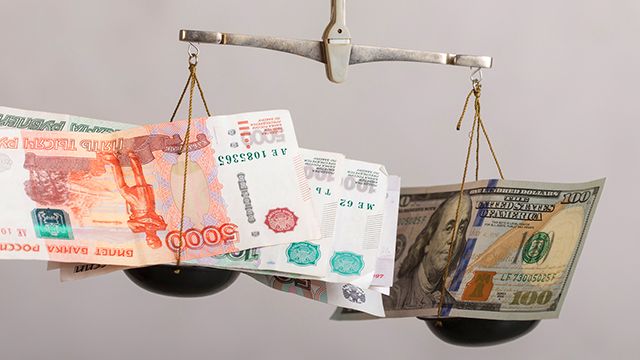
The head of VTB Bank, Andrey Kostin, suggested that we should stop using dollars in trade with foreign countries as soon as possible, and should instead switch to using the national currency. We discussed the impact of rejecting the dollar on the Russian economy – and whether this is a good idea – with economist Nikita Krichevsky.
Kostin did not suggest any sort of rejection of the dollar; that is an utterly false interpretation by the media. He was talking about transitioning from making payments in dollars to using other currencies, and those are fundamentally different things. Moreover, that transition is a long, extended concept – it cannot be implemented in a moment, a day or even within a year.
In addition, it is necessary to do this for both political and economic reasons. This isn’t a matter of sanctions as much as it is about global American protectionism. The U.S. uses all available tools in the support of American protectionism, and one of the most important tools at America’s disposal is the American national currency. Most commodities are traded in dollars, and Russia, as we know, is a commodity and exports-oriented power. As such, the rejection of the dollar in favor of other currencies is completely justified, and this idea should be allowed to be pursued.
Another issue is that this transition is connected to many other factors, the most important of which is the stability of the Russian national currency. You can improve whatever you want, you can introduce presidential decrees, issue orders from the Central Bank or the Ministry of Finance, but if you have a currency that fluctuates by several percentage points in one day, staggering from side to side (as has been the case for the last several days), then no one in his right mind would start using rubles to make transactions. This is a question of risks: Who takes on the risks associated with currency exchange and credit? Because if we’re talking about rubles, this would require the activation of some resources to convert a portion of funds into rubles.
It is clear that this is something we have to do, but it won’t be profitable for us, since these risks will most likely be reflected in cash shortages in the budget. Exporters’ revenues will fall, and as a result, both tax revenues and dividends will fall as well. Therefore, the first and most important issue in this story is getting the ruble on a stable, sustainable track. As soon as that happens, we can proceed forward with confidence.
This mechanism has already been operating in China for a long time, and has become a tangible factor in its economic growth. It is completely unclear what is stopping us from doing the same thing.

Leave a Reply
You must be logged in to post a comment.